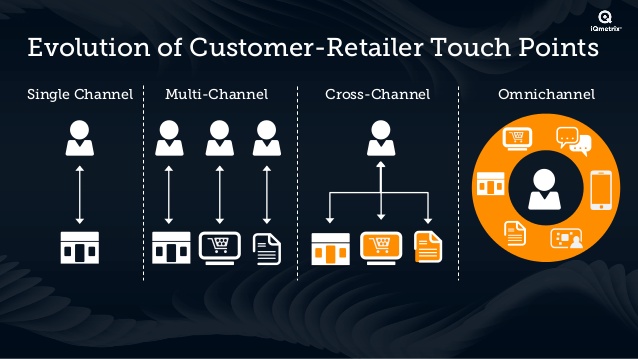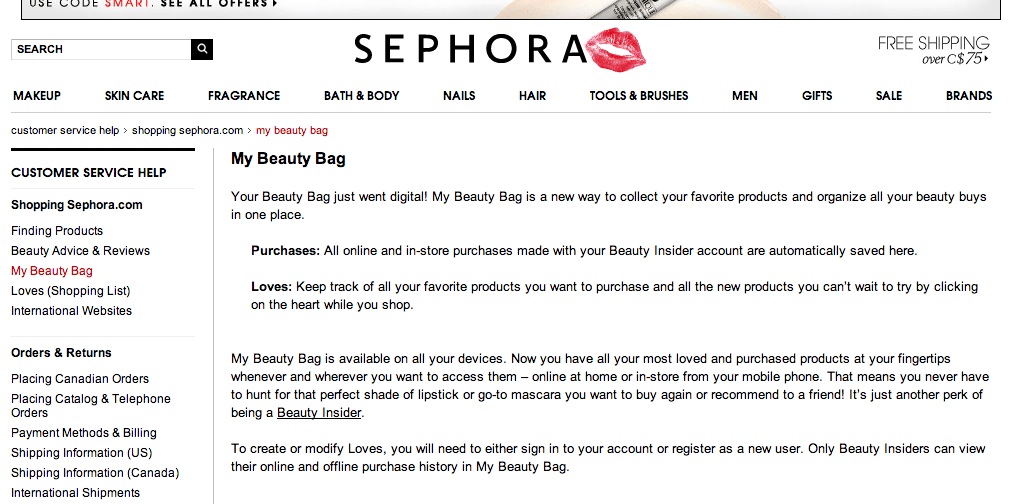Understanding Omnichannel Strategies and How it Affects You

Your customers are interacting with your brand in all kinds of different ways. They read your Twitter updates, watch your videos and share your content. They research your products and how they compared to the competition. Finally, they purchase the product. Were you able to track all of these interactions and was your customer able to seamlessly switch between channels without losing any information?
This is where an omnichannel strategy comes in. Your customers interact with you through multiple channels and you need to make it easy for him/her to get the information that they need across any channel.
For example, imagine that your customer is shopping through their mobile phone and they add several items to their cart. They don’t finish the sale right away instead deciding to come back later in the day to do it on their laptop. They now have to re-add the products back to their cart and this might be enough of an annoyance that they don’t complete the purchase. Going omnichannel is about solving small challenges like this.
How does omnichannel compare to previous strategies?
In the graphic above, we can see how customers used to buy from retailers. The first stage was single channel or simply going to the store for all of your information. You would look at products, talk to sales people and finalize the sale while you were in the store. There was no online resources that you could check for reviews or other prices.
In the second stage, we started adding more channels where through customers can purchase products. However, customers would usually stick with their preferred channel either completing all of their sales online or completing their sales through physical stores. Mobile phones weren’t as popular yet and it wasn’t feasible to just check the price of a product online while you were at the store.
In the third stage, we started seeing customers combining multiple channels into their buying experience. It became more common to go to a store and check the price of a product against Amazon or to check what our friends were saying on social media before we purchase a product. We also see more and more users start or try to complete purchases on their mobile phones. This is where we currently find ourselves.
The four stage, omnichannel, is where retailers need to move to. Customers can take advantage of all the available channels e.g. social media, mobile devices, stores and websites and seamless move in between without losing information. This means that someone could start their search on their phone but complete it on their laptop. Or they could check reviews through social media and complete the purchase on their mobile devices.
For retailers, it also means being able to track customers across any channel. Retailers can then build a complete history of where customers are spending time and what areas to focus on.
Why is it worth the effort?
Let’s take a look at some interesting statistics that show just how multi-channel consumers are becoming. According to iQmetrix, over 50% have made multi-channel purchases. This means that these customers have completed the buying process using multiple channels.
Over 38% of smartphone users have also made a purchase using their mobile device and online shopping has seen a 15% growth over the last year. We also see that 4 out of 5 consumers use their smartphone in the buying process.
We also see social media playing a key role in helping consumers decide. From instant communication to using Snapchat to send potential outfits, users turn to social media on a constant basis to get shopping advice. Some might even be following you on Twitter or Facebook looking for new products or promotions.
At the end of the day, an omnichannel strategy is about offering a better customer experience. An experience that doesn’t feel broken to a user when he/she moves from their mobile device to their laptop. Imagine a scenario where a customer is researching one of your products on their mobile phone. They read everything about the product and decide to purchase it when they get home. An omnichannel strategy would be aware of this and would remind the user about the product that they viewed today and would encourage them to buy it instead of showing them new products to buy.
Examples of Companies Going Omnichannel
As always, some retailers are trying to stay ahead of the curve with some interesting tactics. Sephora for example, uses apps to let users keep track of their favorite programs. They have a program called “My Beauty Bag” and their customers can access that information through any device.
The apps make it easy for users to organize their products, re-order more items and find new items. More importantly, any activity that they do is saved and they pick up where they left off through any other devices. This is the kind of experience that makes it easy for Sephoras’ customers to buy more products
Another retailer who is trying to deal with all of their channels is Crate and Barrel. Users who sign up can continue any kind of research or purchase through any channels. They could simply move to a smartphone and into their app to complete their purchase. They do have to use apps because of technical limitations but it’s extremely convenient for their customers.
The challenges behind an omnichannel strategy can be quite complex but the rewards are substantial. Its just not about the increase in profits but about increasing customer happiness and satisfaction by offering your products in a way that customers would love to learn about them.
Do you have any tips or advice on how to go omnichannel? Let me know in the comments
Tagged omnichannel
Image by: Pete Sadler. Licensed under CC BY 2.0.







